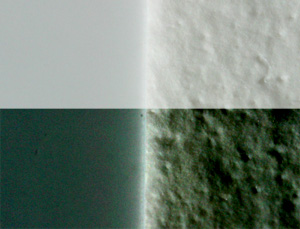
C Ribet Fine Art open edition prints available from Zenfolio are printed on heavy weight fine art papers. Please note that these papers are to be handled with care as rough treatment and/or physical abrasion (rubbing) of the surface can damage the quality of the printed image more so than some other papers. Obviously, you should instruct your framer to take care with any artwork, but most particularly fine art prints.
The print company which prints these fine art prints is one of the best US printing companies and as of Jan 2013 prints on Hahnemuhle German Etching 310 GSM Fine Art Paper which is the same paper I use for man of my own limited editions. Their work is prefessionally done, and most importantly they treat the final print with care in handling and shipping to you. Other art services available on the web state that their products are fine art products, but they use inferior papers an will ship prints all jammed together rolled up in a tube which with virtual certainty will ruin the surface of any true fine art paper.
In the words of a company representative:
"This is the type of paper that we use [German Etching 310 GSM[. These are shipped flat and are covered with a layer of plastic, then foam and then sandwiched in boards to ensure they make it in great condition."
The prints (as in the company photo below) are printed suitably for framing (not edge to edge as some photo printing processes). To quote the company representative again:
"We usually leave a couple inches around the print to give the person receiving options on how to mount or frame the image."
Quality and Weight
It is difficult to adequately describe the quality and sheer heft of the fine art watercolor papers used in the printing process. They are extremely rigid and very thick (nearly 0.5 mm). In fact, they are sometimes referred to as “board” rather than “paper” on account of their great thickness and heavy weight and inflexibility. They are stiff, exceptionally fibrous, and highly textured.
A Three Dimensional Surface Texture

The above magnified image shows the difference in surface texture between the fine art watercolor paper, Hahnemuhle William Turner, and a typical photo paper used to reproduce photographs conventionally. The two papers are lying side by side in the photograph. The left is the photo paper; the right is the William Turner watercolor. The top half of the image is un-modified, while the bottom half is enhanced to bring out details in both papers. You can see, that with the exception of a few minor defects, the photo paper is completely smooth with no distinguishable surface texture. The William Turner watercolor paper, in contrast, has a highly three dimensional surface structure. It is richly textured and marked with numerous deep depressions, plateaus and ridges.
From the printer's website:
